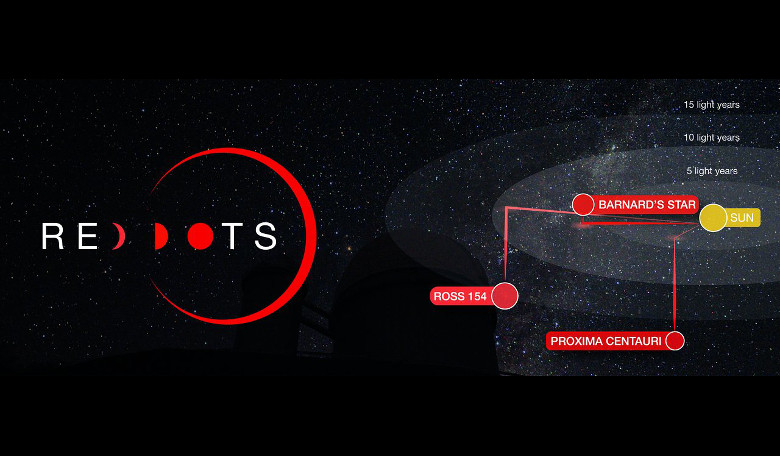The team that discovered a planet around our nearest star last year are hoping for a similar success, as they launch a new initiative to find more Earth-like worlds around some of our nearest stellar neighbours.
Last January, the Pale Red Dot campaign began a unique outreach campaign that allowed the general public to follow scientists from around the globe as they searched for an Earth-like exoplanet around the closest star to us, Proxima Centauri. It was met with great success as within the habitable zone of our nearest red dwarf companion star, Proxima Centauri b was discovered.
This time the team are targeting Barnard's Star and Ross 154 along with Proxima Centauri again, as scientists suspect that more than one terrestrial planet is in orbit around the star. Barnard’s Star and Ross 154 are both red dwarfs too at 6 and 9.7 light years away respectively.
Photometric observations of the stars have already begun by the scientific team using ESO’s High Accuracy Radial velocity Planet Searcher (HARPS) and other instruments across the globe and spectrographic observations started two days ago. HARPS will search for around 90 nights and look for the minute wobbles in the host star’s motion caused by an orbiting exoplanet.
Although the public was encouraged to follow the Pale Red Dot campaign via social media last year, the results were not presented until after the standard peer review process had taken place. This time however, observational data from Proxima Centauri will be revealed, analysed and discussed in real time as the campaign unfolds.
This Open Notebook Science experiment — real science presented in real time — will keep the public informed of any discoveries via the reddots.space website. Nonetheless, it has been stipulated that any observations presented during this time will of course be preliminary only and any conclusive statements about what is found, will not be released formally until a research paper is written, peer-reviewed and accepted for publication.
Still, those that are following the campaign could get a first ‘unofficial’ glance at what could turn out to be, the next closet habitable exoplanet to us.
If additional planets are indeed discovered around these stars, it is hoped that ESO’s Extremely Large Telescope (ELT) will be able to directly image them and characterise their atmospheres, when it comes on line in 2024.











